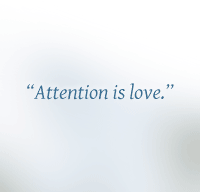
Your children are not your children.
They are sons and daughters of life’s longing for itself.
When they are young, our children can seem like the tiny thorns to our bloom: our creative yearnings confined. As they grow up, our children can seem like the blooms to our thorn: their freedoms caged.
And yet, our longings are the same, two parts of an indivisible whole: life’s longing for itself.
I’m excited to share two upcoming events that examine motherhood as the unfolding of a creative journey. I hope you let yourself out of the house and come, where you are certain to meet a part of yourself you thought you’d lost.
Lost in Living
A full-length documentary by Mary Trunk
Friday, Feb. 1, 6:30 p.m.
Free, or a $5 charitable donation to benefit the All Saints Foster Care Project
All Saints Church
132 Euclid Ave.
Pasadena
Behind the domestic curtain of motherhood, where the creative impulse can flourish or languish, are four women determined to make a go of it. Filmed over seven years, Lost In Living confronts the contradictions inherent in personal ambition and self-sacrifice, female friendship and mental isolation, big projects and dirty dishes. The complex realities of family life unfold in this documentary film about the messy intersection of motherhood and artistic expression.
Magical Journey: An Apprenticeship in Contentment
Discussion and book signing by Katrina Kenison
Friday, Feb. 8, 7 p.m.
Free
Vroman’s Bookstore
695 E. Colorado Blvd.
Pasadena
“No longer indispensable, no longer assured of our old carefully crafted identities, no longer beautiful in the way we were at twenty or thirty or forty, we are hungry and searching nonetheless.”
An inspiring, beautiful book for every woman whose children are growing up, but who is not done growing herself. Kenison explores the belief that even as old identities are outgrown, new ones begin to beckon, inspiring readers to summon enough courage to heed the call.
Heed the call.
(If you subscribe by email and are unable to see the trailer below, click here.)

 I will confess to having an unhealthy fascination for the Lance Armstrong saga. I watched his interview on Oprah last week.
I will confess to having an unhealthy fascination for the Lance Armstrong saga. I watched his interview on Oprah last week.
 And he took bread, and gave thanks, and broke it, and gave unto them, saying, This is my body which is given for you: this do in remembrance of me. — Luke 22:19
And he took bread, and gave thanks, and broke it, and gave unto them, saying, This is my body which is given for you: this do in remembrance of me. — Luke 22:19
 Gilead
Gilead The Unlikely Pilgrimage of Harold Fry
The Unlikely Pilgrimage of Harold Fry Magical Journey
Magical Journey




